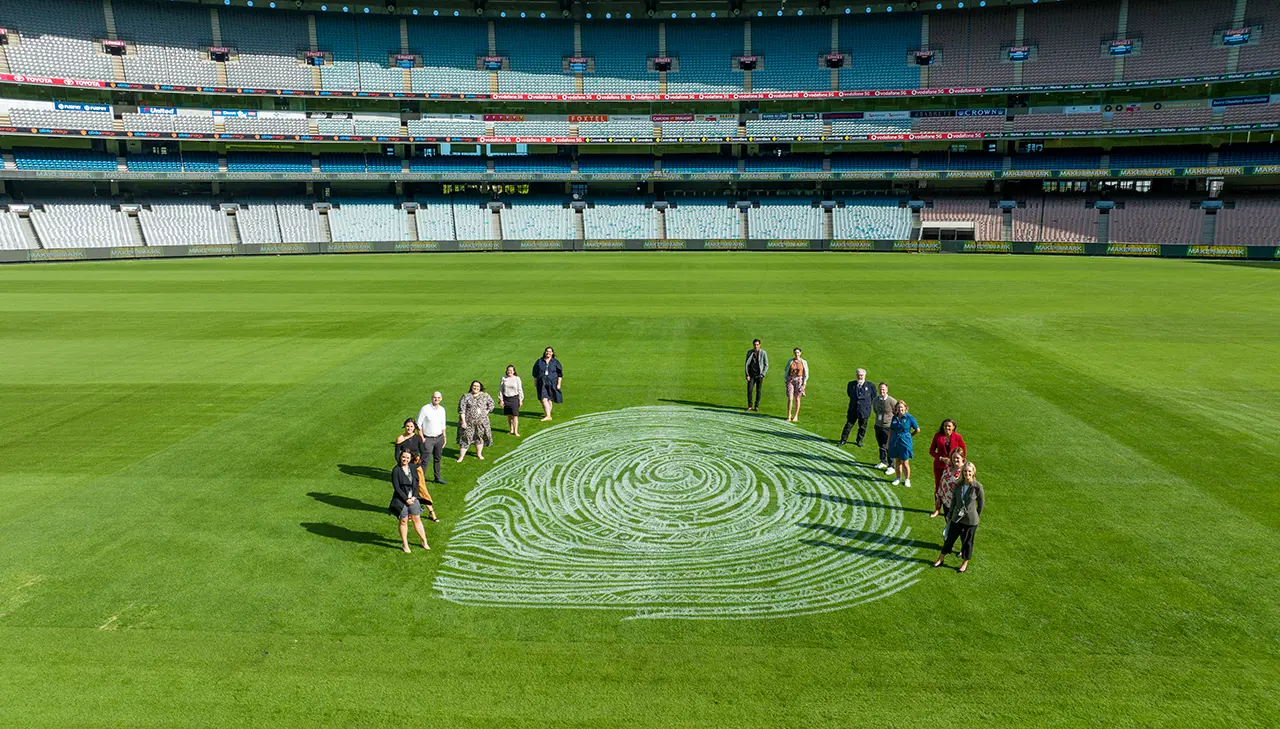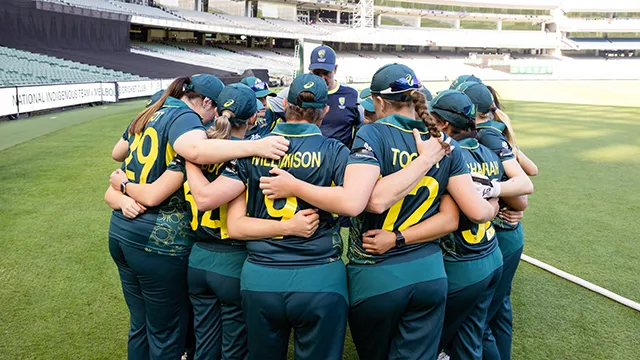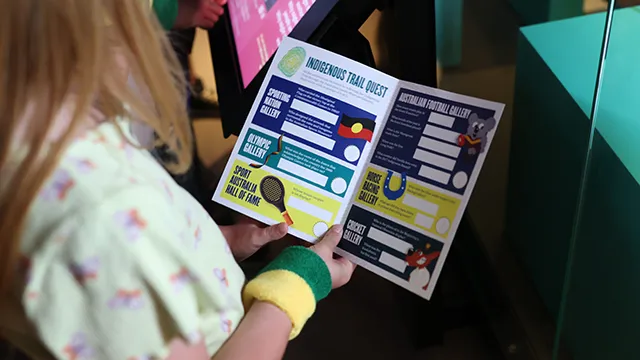The RAP formalises the commitment to the reconciliation journey by the MCC, MCG Trust and the Australian Sports Museum by turning ideas into actions and taking the first steps towards reconciliation.
The RAP celebrates the history and connection of the Wurundjeri Woi-wurrung people to the land where the main MCC office is based and where the MCG and Australian Sports Museum is located.
Read the Plan
Artwork
Wurundjeri Woi-wurrung artist Mandy Nicholson has created an artwork that is seen in the RAP commitment document and will be displayed throughout the MCG in coming months.
A fingerprint is as unique to a person as it is to your Country. Where the MCG stands is on Wurundjeri Country on the banks of the Birrarung (Yarra), meaning river of mist. It is on the site of social and cultural gatherings from time immemorial.
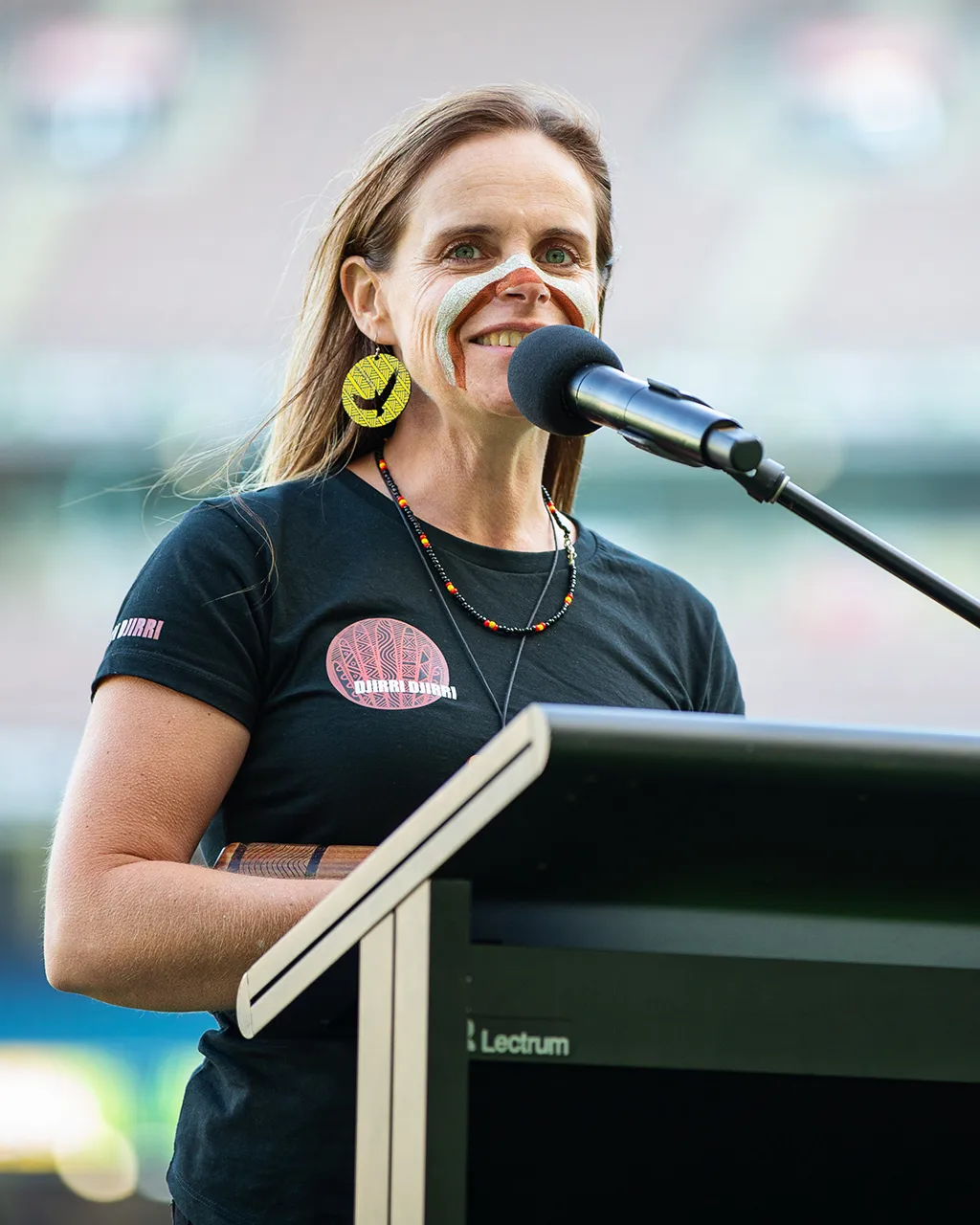
“Marngrook was played there, the first version of Aussie Rules. A possum ball was kicked up in the air in all directions and ‘marked.’
“Eventually a round patch of grass turned into the MCG. A shared journey.
“This circle is the focal point of the design.”
The overall design depicts a fingerprint, my fingerprint (left ring finger) to signify my connection to Wurundjeri Country, connecting me to place. The designs within the fingerprint are unique to this part of what is now known as Victoria.
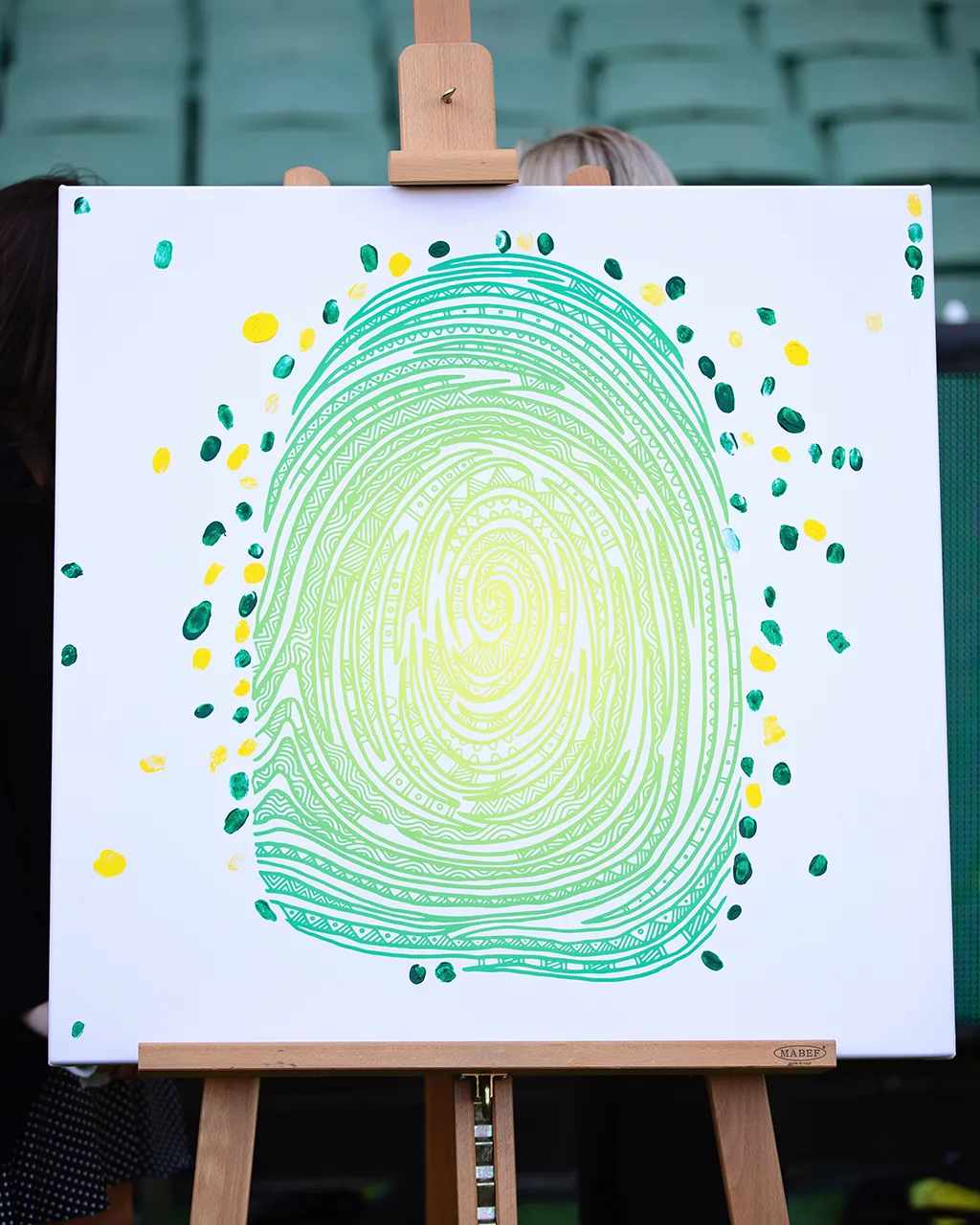
“Wurundjeri are a carving culture and the symmetrical lines, circles and wavey lines are all derived from Wurundjeri artefacts including wangims (boomerangs), or mulga (shield). Other designs are from Berak’s (William Barak’s) paintings of ceremonial attire, usually walert-gurn (possum skin cloaks).
“These markings are like a modern day surname, they tell people which district and Language Group you are from. Each style of art is regionally based, we are carvers, not xray or dot stylists.
“Those styles tell the narrative of their Countries, but the narrative of Wurundjeri is freshwater, bushland people, not deserts, or tropical regions. Country is remarkable, unique and self-identifying just like your fingerprint.”
- Mandy Nicholson

